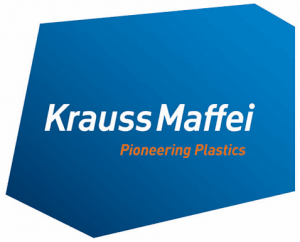
Sustainable Enjoyment: With Coffee Lids Made of LSR
At present, it is especially important to ensure hygienic safety when eating and drinking out. For coffee on the move, there’s a simple solution; take your own lid for throwaway and multi-use cups, preferably made of silicone. Any thermoplastic processor can start production without risk, because KraussMaffei provides turnkey solutions.
Silicone is flexible, anti-bacterial, temperature-resistant, long-life, and it contains no plasticisers. These properties make it the ideal raw material for the lids of coffee cups, because they can be carried around easily and cleaned at home in the dishwasher later. Even with deposit cup systems, the lid usually has to be purchased separately for hygiene reasons. In the case of single-use containers, waste can be reduced practically by using one’s own lid.
With their relatively simple geometry, articles such as the cup lid are, in turn, especially suitable for thermoplastic specialists starting out in the processing of silicones. Here, they do not need their own process specialists, for the complete systems from KraussMaffei provide the necessary technical knowledge and an appropriate partner network, for example, the mouldmaker ACH Solution and the material producer Wacker Chemie, which provides temper-free low volatile formulations such as the ELASTISOL LR5040 series. The three companies are cooperating in this project to make silicones and their processing more widely available.
For example, on an all-electric PX 121-180 SilcoSet, two different lids are created simultaneously in one shot. One lid is for thick-walled porcelain cups, and the other is for the familiar Recup deposit system, which has caught on in many cities and regions. The article weights are between about 38 and 50 grams, and the heavier Recup lid has a special decorative feature. The attached tab can be decorated with advertising or a brief message by laser.
The greatest challenge when processing liquid silicone is its low viscosity. The mould must close extremely tight to achieve a stable process. Very often, even a vacuum is applied. In addition, the temperature control is the reverse of that for thermoplastics. The mould is heated so that the crosslinking process can start at all.
On the machine side, a perfect seal between the metering and injection units is essential. As silicones are subject to relatively high batch fluctuations, thus also resulting in process fluctuations, special attention must be paid to the consistent weight of the manufactured components. During ongoing production, the machine function APC plus monitors the viscosity of the material and adjusts the filling volume in the cycle from shot to shot.
After removal and camera checking for complete demoulding and geometric accuracy, the coffee lids are immediately ready for use. With the right partner, it is so easy and risk-free to participate in the growth market for silicone. Further growth has already been predicted.

KraussMaffei
+44 (0) 1925 644100
Website
Email





